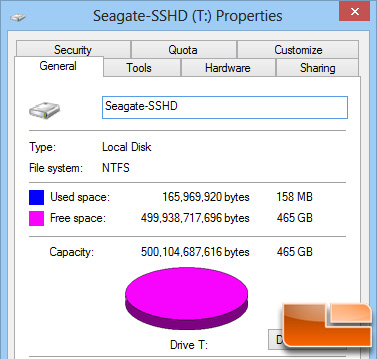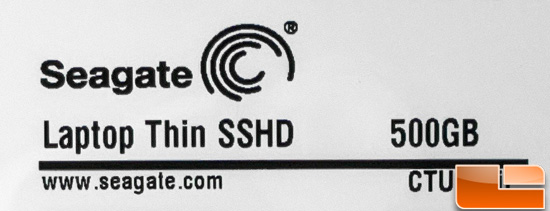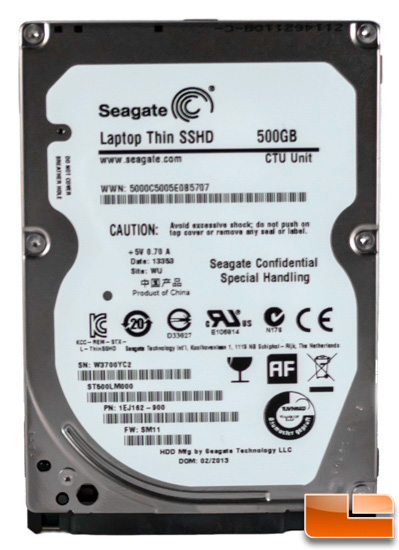Seagate 500GB SSHD Thin Hybrid Drive Review
Final Thoughts and Conclusions
Even though the Seagate Laptop Thin 500GB SSHD has 8GB of NAND on board, it won’t be reflected in the overall drive capacity as shown in Windows. Instead you get the 465GB of availability from the spinning platter portion of the drive.

Rather than regurgitate the fundamentals behind the SSHD drive discussed on the first page, I’ll present a well composed video produced by Seagate that talks a little bit about the benefits as well as showing some comparison demos. We saw much the same when we were at CES in January where they showed some impressive side-by-side comparisons.
The long and short of it is that most users can’t afford a large capacity SSD and since most mobile PC’s are limited to a single drive, buying a small SSD isn’t really a viable option – even in the golden age of cloud storage. For $83.57 shipped you can pick up this 500GB SSHD that’s thin enough to fit into most any PC. By caching the most used data on 8GB of solid state components using Adaptive Memory Technology, it offers “SSD like” performance for many tasks, yet is large enough for all but the most storage hungry users. Even better, this technology is handled by the controller exclusively so it’s OS agnostic and can be used on PC’s, Macs and even Linux installations. A similar capacity SSD will run at least three times as much and some are more than a new laptop.

Performance is a mixed bag, especially early on. The Adaptive Memory Technology takes some time to learn what to and what not to cache so until then, reads will come at the rate served up by the 5400RPM platter drive. Once cached on the solid state components, responsiveness increases perceptively and it struts its stuff. Doing ‘normal’ computing like web surfing, email, word processing, etc move along speedily. This probably represents a good chunk of users. However, where users will see a slowdown is reading data that’s a one-time or infrequent basis like loading game levels. So, it gives away some performance at the expense of, well expense. This generation 3 drive performs about the same as the previous generation on non-cached reads but does post an improvement when leveraging the SSD portion of the drive. Given the smaller form factor, it’s certainly more flexible in terms of available devices for installation. Both points make it a much more attractive buy over the previous models.

We certainly can recommend the Seagate Laptop Thin 500GB SSHD for those users wanting substantial storage with some pep and a small form factor. However, as time goes on and SSD prices continue to fall, the disparity between hybrid drives such as this and pure SSDs continues to narrow. As such, like we’ve stated with SSD cache drives, we see these as a bit of a stop gap until that price disparity becomes small enough to not be a decisive factor. Until then, Seagate could kick things up a notch by adding in more solid state storage so more can be cached with increased aggressiveness and bump up the spinning platter to 7200RPM for those times when non-cached data is accessed. This will up the price and power usage a bit but may make it more appealing to the consumer.
Legit Bottom Line: Users with machines requiring 7mm height drives who find the price of large capacity SSDs hard to swallow now have a very nice alternative with Seagate’s Laptop Thin SSHD which combines large capacity and low cost with performance that oftentimes match that of SSDs.

Comments are closed.